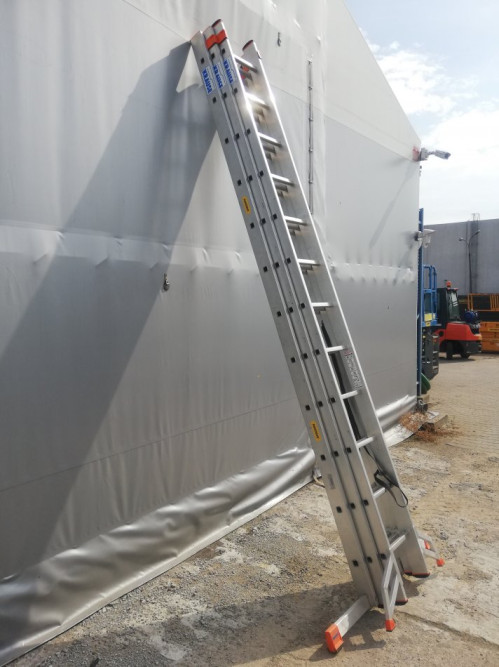Which ladder is best for installation and painting work?

Wooden, metal or plastic ladder?
The first feature of a ladder that determines its performance and price is the material from which it is made:
- Wooden ladders - traditional, non-conductive in the dry state, relatively heavy, do not allow the construction of long spans (without hardware and metal reinforcements), offered mainly as different heights of straddle ladders, which some installers value for the ability to move using only the legs (without having to descend),
- Metal (aluminum) ladders - you can still find steel ladders, but this is already a big rarity - lightweight, very strong, corrosion-resistant aluminum ladders dominate, which are available in a wide variety of models and working height ranges,
- Fiberglass ladders - lightweight, non-conductive, resistant to aggressive chemicals, non-corrosive and durable fiberglass ladders have only one drawback - a relatively high price.
The choice is quite simple: if you are looking for a ladder that is versatile, lightweight, durable and available at an attractive price, then you should look for the right model among aluminum ladders. A straddle, articulated or telescopic ladder?
If we already know that we are interested in an aluminum ladder, it remains to decide which type will be most suitable. There are three basic ladder designs to choose from:
- Extension ladder - a simple in construction, lightweight ladder, equipped with steps on both or only one side, usually ending with a small platform on which you can set a bucket of paint, a box of screws or put hand tools - its disadvantage is the relatively low working height,
- Articulated ladder - a very useful design, which allows you to easily transform an extension ladder (with equal arms, but also division in proportions that allow stable installation of the ladder, for example, on the stairs) into an extension ladder with a considerable reach,
- Telescopic ladder - consists of several stringers slid into each other, which can be used separately or joined together to form longer sections (adjustment with the accuracy of one distance between rungs) - this is the longest commercially available stepladders (some models can also be folded into the form of extension ladders), whose working range can exceed 10 m.
Extension ladders are by far the most functional and meet the needs of performing most typical installation and finishing work in residential, office or commercial buildings. Aluminum telescopic ladders are useful for working on facades and reaching higher lighting elements, surveillance cameras, windows or guttering. Their usefulness for interior work is quite limited due to their large size and relatively high weight. If you need a ladder with a long reach and maximum versatility, and at the same time having a small size when folded, you should look among articulated ladders. It will be perfect for both indoor and outdoor applications.
A ladder with a large platform and safety railing
For jobs that require excellent stability and prolonged standing on a ladder, an aluminum ladder with guardrail may be a good option. It's not as light and easy to reposition as an extension ladder, and it doesn't have the reach of a telescopic ladder or the versatility of an articulating ladder, but in return it offers stability and the ability to accommodate a considerable amount of equipment and materials on the platform. Also of great importance is the fact that the installer or painter in the course of the work has the assurance that a sudden imbalance will not end in a dangerous fall: he can always count on the protection of a solid railing.